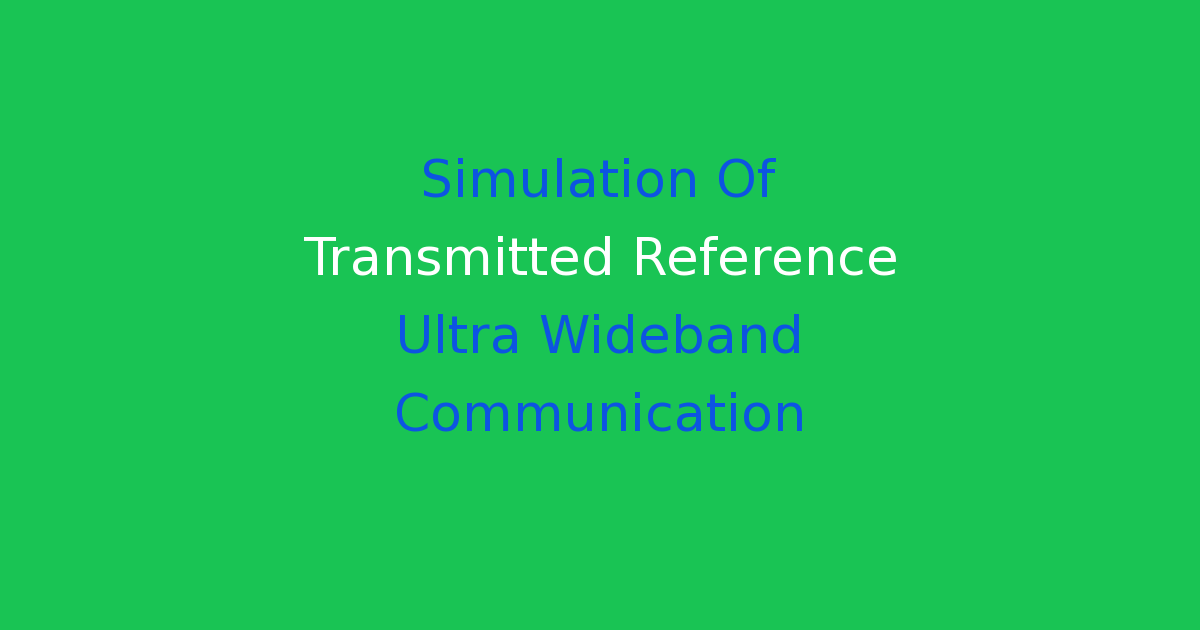Simulation of ultra wideband communication with transmitted reference.
Simulation of Transmitted Reference Ultra Wideband Communication
Introduction
Transmitted Reference Ultra Wideband (TR-UWB) communication is a promising technology for high-speed data transmission over short distances. It utilizes impulse radio technology to achieve high data rates with low power consumption. In this project, we aim to simulate and analyze the performance of TR-UWB communication system.
Problem Statement
Traditional communication systems suffer from limitations such as interference, multipath fading, and poor data rates. These limitations make it challenging to achieve high-speed data transmission over short distances. The goal of this project is to overcome these limitations by designing a TR-UWB communication system that can achieve high data rates with low power consumption.
Existing System
The existing communication systems, such as Wi-Fi and Bluetooth, utilize narrowband communication techniques that are prone to interference and multipath fading. These systems are limited in their ability to achieve high data rates over short distances. In contrast, TR-UWB communication utilizes ultra-wideband signals that can penetrate obstacles and achieve high data rates with low power consumption.
Disadvantages
Despite its advantages, TR-UWB communication also has some disadvantages. One of the main disadvantages is the complexity of the receiver design. The receiver must accurately estimate and remove the direct path signal to recover the transmitted data. This complexity increases the cost and power consumption of the system.
Proposed System
In this project, we propose a novel TR-UWB communication system that utilizes a hybrid receiver design to overcome the limitations of the existing systems. The proposed system combines the advantages of both coherent and non-coherent receivers to achieve high data rates with low power consumption.
Advantages
The proposed TR-UWB communication system offers several advantages over the existing systems. Firstly, it can achieve higher data rates over short distances due to the ultra-wideband signals. Secondly, the hybrid receiver design reduces the complexity and cost of the system. Finally, the system can operate in harsh environments with minimal interference.
Features
The key features of the proposed TR-UWB communication system include:
– Ultra-wideband signals for high data rates
– Hybrid receiver design for lower complexity
– Low power consumption
– Robust performance in harsh environments
– Improved resistance to interference and multipath fading
Conclusion
In conclusion, the simulation of Transmitted Reference Ultra Wideband Communication system shows promising results for achieving high-speed data transmission over short distances. The proposed system overcomes the limitations of the existing communication systems and offers several advantages, including high data rates, low power consumption, and robust performance. This project provides valuable insights into the design and implementation of TR-UWB communication systems for future applications in high-speed data transmission.

